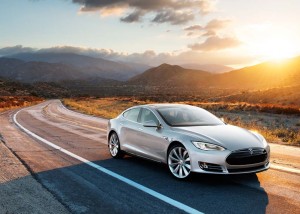Tesla Motors today confirmed it will pay back a more than $450 million loan it received from the Department of Energy, part of a controversial Obama Administration program intended to encourage the development of clean, high-mileage automotive technology – but which has seen several high-profile failures by companies that received some of the taxpayer-funded loans.
Earlier this week, Tesla CEO Elon Musk signaled his plan to pay off the program more than a decade ahead of schedule – a move meant to reduce Tesla’s interest costs but which also is expected to generate a profit of as much as $12 million for the U.S. Treasury.
“I would like to thank the Department of Energy and the members of Congress and their staffs that worked hard to create the ATVM program, and particularly the American taxpayer from whom these funds originate,” said Musk, referring to the Advanced Technology Vehicle Manufacturing program. “I hope we did you proud.”
The decision to pay off the DoE loan early reflects the sharp improvement in the California battery carmaker’s recent fortunes. It generated a first-ever profit of $11.2 million during the January to March quarter thanks to unexpectedly strong sales of the Model S battery-electric vehicle, or BEV. And it has seen a sharp surge in its stock price which climbed from a low of around $34 a share in March to more than $92 in recent days.
The maker’s stock fell to $87.35 at Wednesday’s close, a decline of 35 cents for the day.
Tesla will tap the estimated $1.1 billion it hopes to raise through a new stock offering to pay off the $451.8 million it still owes the Treasury, on top of small payments made last year and during the first quarter of 2013. The remaining funds will be used, at least in part, to underwrite Tesla’s future product development programs.
The maker launched its Model S sedan last summer and plans to add a new crossover, dubbed the Model X, by late 2014. CEO Musk recently confirmed to TheDetroitBureau.com that additional products are under development targeting more mainstream segments of the U.S. market than the Model S which can cost in excess of $100,000 fully loaded.
The South African-born executive – who made his initial fortune through the PayPal web service and who also owns the SpaceX rocket launch service – has even hinted Tesla might consider developing an electric pickup and other products.
The challenge will be to maintain momentum, analysts say, in a market that has so far been skeptical of battery-based vehicles. According to the advocacy group Plug-In America, U.S. motorists have only now purchased the 100,000th plug-based vehicle – which includes both battery-electric vehicles like the Model S and the Nissan Leaf, as well as plug-in hybrids such as the Chevrolet Volt. It has taken nearly three years to hit that mark which is the equivalent to the number of Camry sedans Toyota sells in the U.S. every three months.
The slow ramp-up in demand has been a problem for both start-up battery-car makers and mainstream manufacturers such as Nissan and General Motors – as well as suppliers like A123. The Massachusetts-based battery maker recently went bankrupt, most of its assets sold to a Chinese company. The California battery-car company Coda recently went into Chapter 11, as well, and senior managers at Fisker Automotive recently warned Congress they might soon file for bankruptcy, too.
That could result in a significant loss for the DoE. Plug-in hybrid maker Fisker had drawn down about $191 million of its own loan before the Energy Department turned off the spigot. A123 also defaulted on some of its loan money.
Tesla reports that it is generating a 30% gross margin on its Model S – a huge number in the auto industry for any manufacturer. The company is betting it can build sales momentum in the months ahead by expanding into new markets in both Asia and Europe.

